Data management is sometimes a difficult subject to tackle as it pertains to long range shooting because there are so many aspects to it. In plain terms though, data management is the process used by a precision rifle shooter to log, track, and access information needed to make a shot. To a precision rifle shooter, data management is a never-ending process. The more information he or she has the better equipped they’ll be to make the all important first round hit at nearly any distance. Some form of data management is used every time a shot is taken and the importance of good data management becomes apparent as stress begins to get introduced into the equation. There are a lot of ways to manage long range shooting data from the most basic data books to expensive ballistic programs but none of those mean anything unless the data is put together in an accurate and efficient manner. A common mantra of data management is “junk in, junk out”.

These are some examples of the data management tools available to the shooter. The data books, FDAC, and Mildot Master can all be used to work out a ballistic solution to a target.
The Data Book
The rifle data book is probably one of the prime most examples of data management used for long range shooting because it is quite literally a history of the weapon system. The rifle data book can be store bought or homemade but it is built upon hours of shooting in different conditions to help understand how the rifle responds. There are many data books on the market but for practical long range shooters the data books made for LE/Mil shooters probably have the most applicable format because it provides pages for various types of targets and other information. Of these I highly recommend picking up a modular data book so that the contents can be tailored directly to the rifle, ammunition, and targets that you’ll be shooting most often. Modular data books also allow the shooter to replenish pages that get used up more often or insert new pages as they’re needed.
When you purchase a new data book there are going to be a lot of different pages inside and it can be pretty easy for a novice shooter to get confused as to what pages are relevant and which ones can be discarded. I personally go through and pull out the pages that have generic ballistic data, basic reticle dimensions, moving target data pages, and the barrel round count. Those pages either don’t apply to my rifle’s configuration or add very little to the overall equation so by taking them out it keeps my data book more streamlined and efficient.
If you have a modular data book also don’t be afraid to reorganize it and modify to suit your needs and shooting style. For example, I organize my data book so that ballistic tables, field sketch pages, and unknown distance sheets are towards the front and target data sheets are in the back. I do this because in competitions those front pages are going to get used more often and it saves me from having to flip all over the data book to find them.
I think the best way to show you how a data book should be filled out is to show you some examples of properly filled out pages and explain some of the how’s and why’s of filling them in with good data.
[full_width]
[/full_width]
In Figure No. 1 we see a Square Target data page that I’m using to record zeroing my rifle after I’ve removed and reattached the scope. We can glean from the top of the page that I’m shooting on Sept. 13, 2014 at Peacemaker National Training Center shooting my Remington AAC-SD with Bushnell ERS using M118LR ammunition at 100 yards. Now you’ll see in the next row down boxes for various environmental factors but I have entered in just “2,000′ DA”. DA is Density Altitude is a combination of the standard environmental factors to provide a single value that represents the altitude the bullet will “think” it will be at. Although, the physical elevation of the range is just under 1,000′ ASL, because of the temperature, humidity, and barometric pressure the air density is actually equivalent to if the range was at 2,000′ ASL. This means the bullet will encounter less air resistance and need less elevation dialed into the scope in order to hit distant target. The easiest way to get DA is to have a weather meter that automatically calculates it but there are charts and graphs that allow you to manually calculate DA with a fair degree of accuracy. There are no issues with entering in the standard environmental data, however I’ve found that it is easier find trends and true up the data for different conditions using density altitude.
When logging the shots on target it’s important to be truthful when plotting both where you call the shot and where it impacts. That way if a shot dropped low or went somewhere you didn’t intend it to go but called it, you’ll be able to deduce that it was a marksmanship issue and not a mechanical one. I like to use numbers to plot my shots because it keeps the page neater and less clutters but you can use whatever method you think will work best. When it comes to notes I try to be concise, it doesn’t have to be a novel, just some basic information that can relay later on what position I was in, what magnification, what may have been out of the ordinary, etc…
One of the primary purposes of using a data book is to log all of the rounds fired and then finds trends in the data that will help gain more first round hits at distance. When I say trends I mean we’re looking for how the bullet behaves under certain conditions so that we can track that information and use it later when we encounter similar conditions. For example, if I’m shooting in weather conditions that might be hotter or colder than when I zeroed the rifle I may look to see if the bullets are impacting above or below center of mass. I did this at a recent match in December when I noticed on the first stage that my shots were impacting low relative to what my ballistic chart said it should be. In this case it’s important to believe the bullet so I started adding some more elevation to compensate for the colder, denser air and as a result got more first round hits.
[full_width]
[/full_width]
I laid out a similar scenario in Figure No 2. where I show how changing conditions effected the bullet’s trajectory and how I compensating to start getting center impacts. When you shoot in different environments and start logging enough data to develop trends you can consolidate them into a ballistic chart that is trued to your rifle system and ammunition’s muzzle velocity. That way when you are out shooting you’re not going to be flipping through a whole bunch of target data pages but can go to one section of the data book that has this summary.
I’ve only touched on the highlights of using a rifle data book and truthfully data books are a very personal thing as shooters have different methods and techniques they use to keep a history of their rifles. I encourage you to try your own methods in order to figure out what might work best for you in the overall scheme of data management for long range shooting.
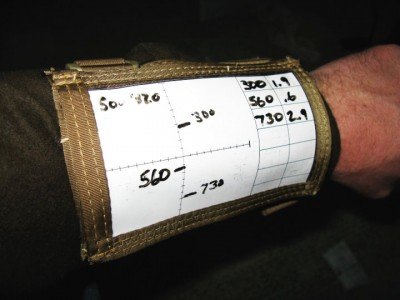
Wrist coaches with multiple windows such as this allow the shooter to keep multiple forms of data handy.
Wrist Coaches
In some shooting disciplines these quarterback wrist coaches or tactical arm boards have become a popular and effective means of keeping important information handy for reference. There are many models available from the very basic ones found in sporting goods stores to tactical models with multiple windows, pen slots, and other features. I would recommend keeping it simple though as too much information can lead to a break down in efficiency as the stress mounts. There are premade data cards available that will fit most wrist coaches and arm boards but it’s also not that hard to whip something up at home on your computer and print it off. I also like to use 3X5 index cards with simple notes, diagrams, or my dope written down to cover the specific task that I’m doing. That way instead of having a whole bunch of information that I have to sort through I can have the specific dope that I need for a stage or the conditions that I’m shooting in right in my peripheral vision when I’m behind the rifle.
Some types of information that I like to have in my wrist coach are reticle diagrams showing my hold overs, a basic dope chart, a small range card, or some reference notes for target dimensions. A wrist coach can not only be a versatile tool for the professional or competition shooter but also hunters who might need to keep vital information only a glance away. Think of it like a string you tie around your finger except this string lets you reference accurate ballistic information to it a distant target.
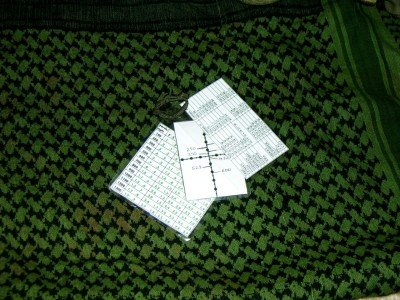
These data cards provide the shooter basic information for hold overs, target sizes, and ballistic data. They are easy to make and compact enough to fit in a pocket or stock pack.
Data Cards
Next to data books ballistic data cards have been around for nearly as long and are also a well established data management technique. They are a simple and effective means of organizing a rifle’s ballistic data for different ranges and in different conditions. PC and free online ballistic calculators make it easy to set up and print off a data table for your specific environment and rifle configuration. When creating your own personalized data chart make sure that you are inputting information and environmental factors that accurately reflect the equipment and conditions you’ll be in. This is where the saying junk in junk out comes in to play as inaccurate information here will equate to frustrating misses down range. I also recommend that when creating your data charts to make several charts up that cover a range of temperatures or density altitudes for the area you’ll be shooting in to have your bases covered.
One advantage to data cards is that they are generally small and very portable so that they can be easily carried or attached to equipment for easy referencing. Some shooters like to make a small, simple data chart and tape it to the side of their rifle so that the information is always with them. In the past I’ve also laminated the data chart and punched a hole through one edge so that I could secure it around the optic. Label makers have also been used to make small, adhesive ballistic labels that can be attached to scopes, stocks, flip caps, and other equipment quite easily. This is not a technique that I’ve done myself however it may be worth the cost to try out. Ballistic cards are an extremely effective tool and their design and lay out is limited only by the shooter’s imagination.
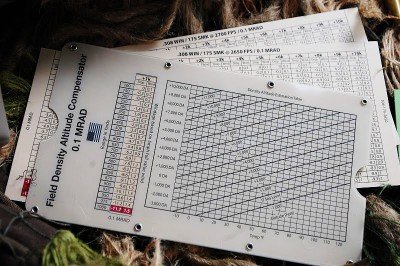
The FDAC is an easy to use and accurate ballistic calculator that works well with most .308 match rounds.
Ballistic Computers
I’m not going to spend too long in this section but I’m going to break it down into two parts, digital and analog ballistic computers. Digital ballistic computers have really come into their own in recent years as electronic devices have gotten smaller, tougher, and more powerful. Digital ballistic computers have been integrated into smart phones, weather meters, even watches so that ballistic information can be easily accessed by the shooter. One advantage that digital ballistic computers have is that they can provide a more accurate ballistic calculation for the conditions that the shooter is in. Wind meters with built in ballistic programs take it a step further because now a shooter can have a real time ballistic solution in the palm of their hand with a program that’s trued to their particular rifle configuration. Another technology that’s started to become popular are laser rangefinders with integrated ballistic computers. This form of ballistic calculator is very convenient but it still has some limitations because it does nothing to calculate wind and in general the ballistic profiles used are generic and may not match perfectly to a particular rifle. Additionally some ballistic programs used with laser rangefinders have a limited range that it can accurately calculate a ballistic solutions, which is fine for hunters but not so much for long range shooters.
As good as digital devices are analog devices continue to be a viable data management tool because for the most part they are impervious to the things that can kill a digital ballistic computer. Products like the Adaptive Consulting FDAC and Accuracy 1st Whiz Wheel can put a lot of capability into the hands of a shooter when their primary means of getting ballistic data fail them. I’ve used both products extensively and both have proven themselves to be accurate all way to 1000 yards when used within the parameters they were designed around. However, if the muzzle velocity or bullet type deviates from the basis of design then the system is less accurate, it’s just a disadvantage to the system. This is a problem I experienced with the FDAC when using it with my AAC-SD, the muzzle velocity was right around 2570 fps and the FDAC cards are set up in 50 fps increments. That meant I had to fudge some of the numbers in order to work out my best estimate was going to be for elevation and wind, especially as the ranges increased. The Whiz Wheel had advantages over the FDAC in that I could better compensate for differences in muzzle velocity but also get dope for a very specific range instead of being limited to a fixed increment. Unlike the FDAC the Whiz Wheel can be set up for nearly any cartridge and muzzle velocity so all of the data is specifically tuned to your rifle.
Ballistic computers are becoming the newest level in data management and continue to evolve into better and more efficient systems. Instead of having to lug around bulky data books and other items, a shooter can have all of the tools they need to make a long range shot in their pocket.

Items as simple as some masking tape and a pen can be used to make simple reticle diagram for hold overs. Inside this flip cap are the holdovers for a .308 using a 400 yard zero.
Field Expedient Methods
In addition to the other methods mentioned above there are a few field expedient methods that have worked out well using nothing more than some tape and a Sharpie. If you find yourself without a wrist coach I’ve seen some competition shooters take strips of green painter’s tape and stick it to their forearm. They’ll write down their dope for their stage, target ranges, whatever they might need to remember and when the stage is over they simply peel it off and trash it. A more permanent alternative is to take some masking tape and put it on the inside of the flip caps and jot down some important dope with a fine tip Sharpie. There is a commercial alternative to this called Scope Dope and it’s a cleaner solution but some masking tape and marker can work just as well. Of course, probably the most field expedient method of data management is writing your rifle’s dope directly on the stock with a Sharpie or other marker. This keeps the dope on the rifle with the rifle at all times and can be cleaned off with some acetone or rubbing alcohol.
In Conclusion
There is no question that there are a lot of ways to manage your long range shooting data and in this digital world it is getting a little easier. The goal of this article was not to cover them all but to provide a good basis for shooters to start from so that they may develop their own skills and techniques in data management. All of these methods have their pros and cons, so the shooter should examine them all and determine which method, or combination of methods, is the best one for them. An important thing to consider though is that whatever method is chosen, keep it simple and easy to use because the more complicated it is the less effective it will be when it really counts.
[full_width]
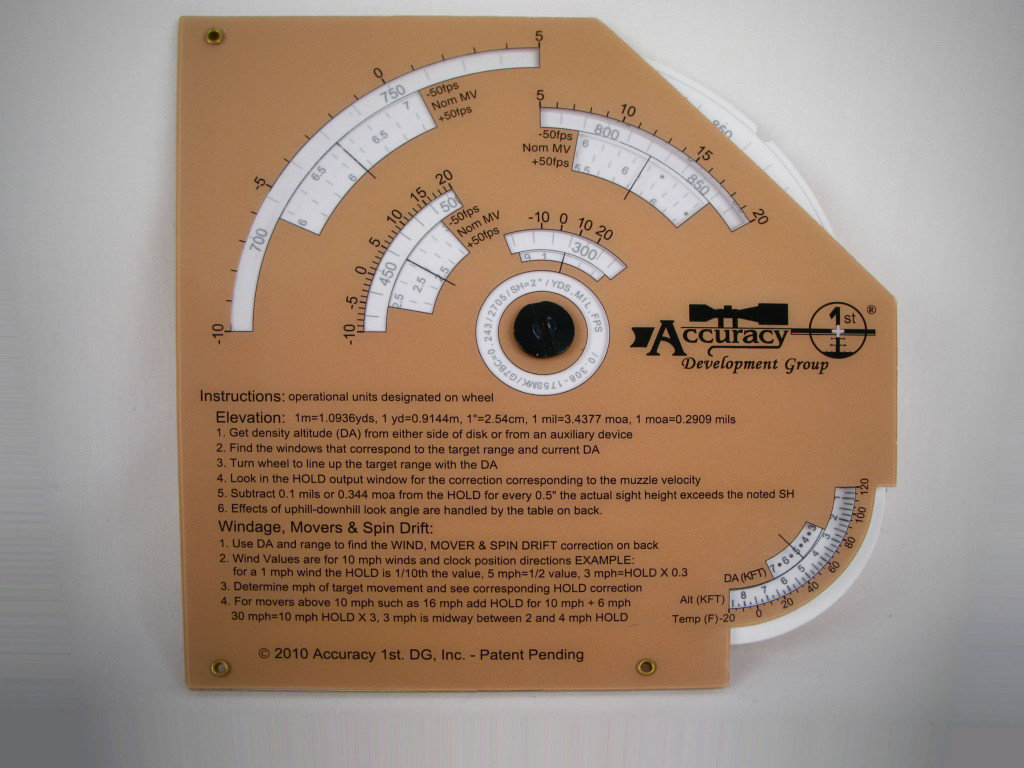
The Whiz Wheel is more complex than the FDAC but provides highly accurate ballistic information for elevation, windage, and moving targets.
[/full_width]
[full_width]
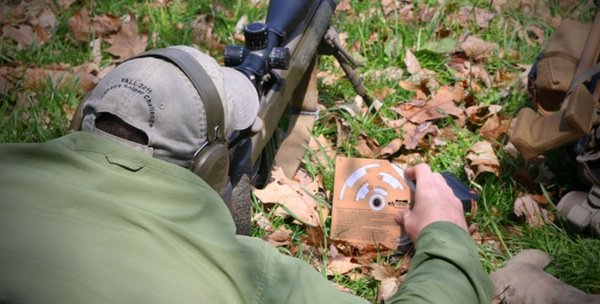
After some practice getting used to the Whiz Wheel coming up with a ballistic solution could be done quickly. The accuracy of the system was also good enough to score hits at 1000 yards with ease.
[/full_width][full_width]
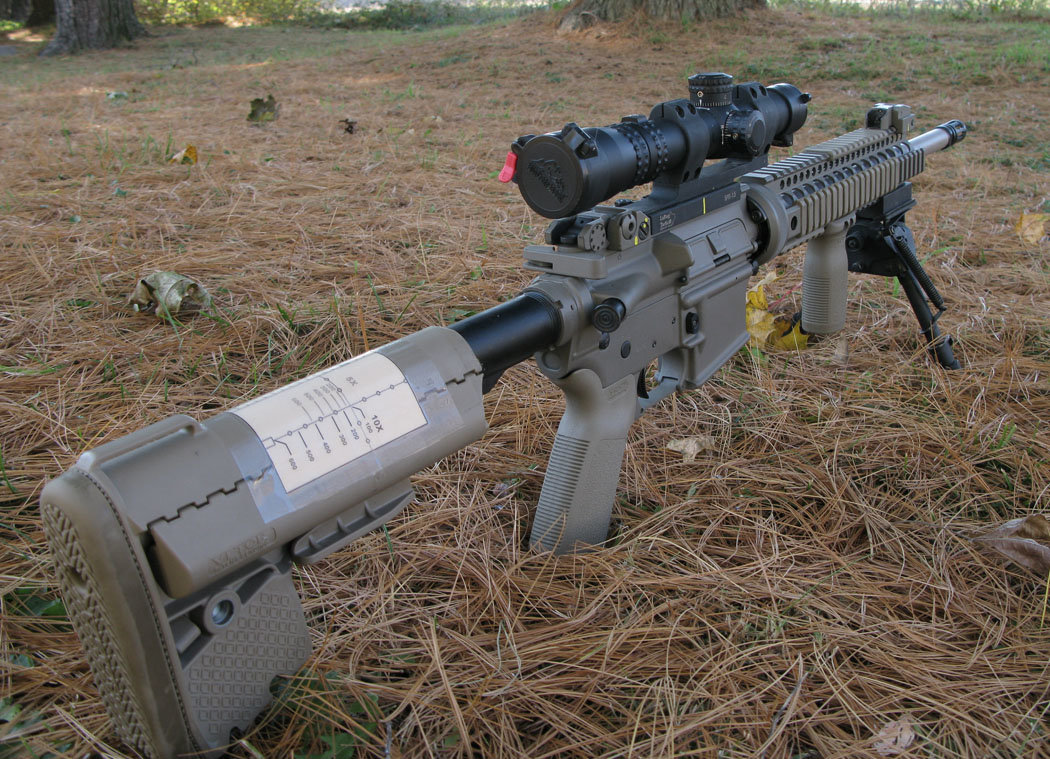
On this AR-15 a ballistic data card is taped to the stock for easy referencing by the shooter. It shows the hold overs needed to accuracy engage targets from 100-600 yards on both 5X and 10X for the SFP optic.
[/full_width]
[full_width]
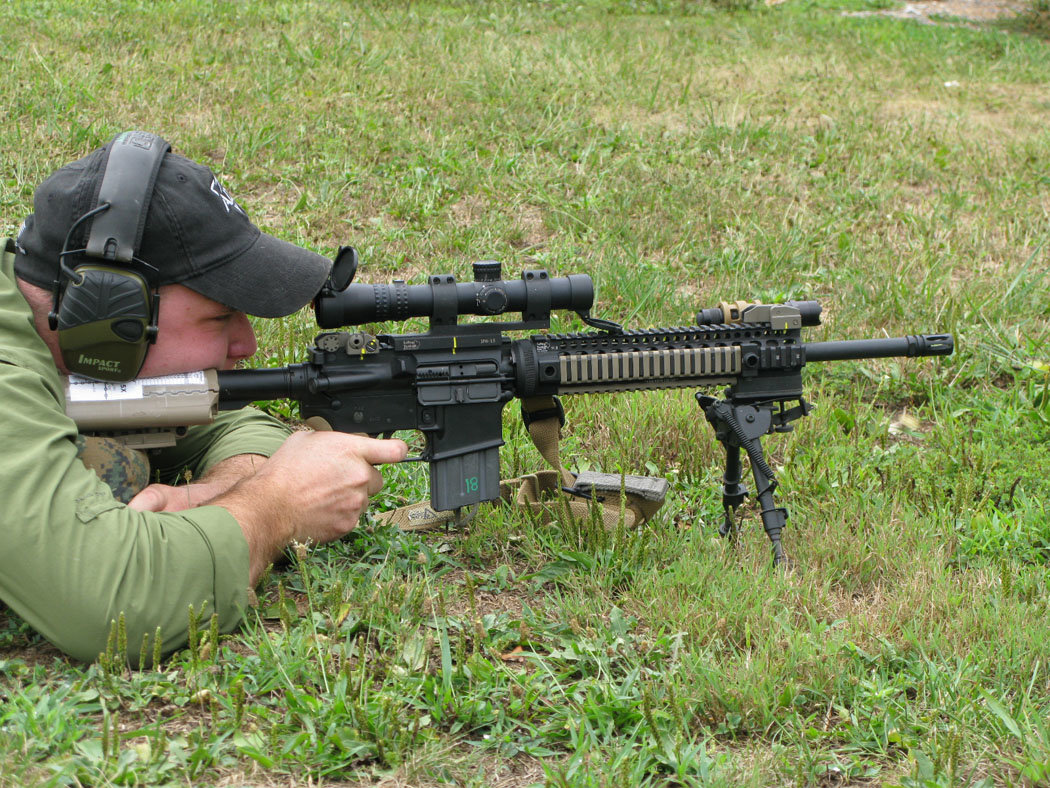
Another shot of a set of ballistic data cards taped to the stock of this AR-15. The shooter only needs to raise his head slightly to reference the ballistic chart or reticle diagram.
[/full_width]
[full_width]
[/full_width]
[full_width]
[/full_width]
[full_width]

This is a field sketch made at The Farm showing the depiction of buildings and target locations. Field sketches such as these don’t only serve a military purpose but are quite useful to competition shooters as well.
[/full_width]
[full_width]
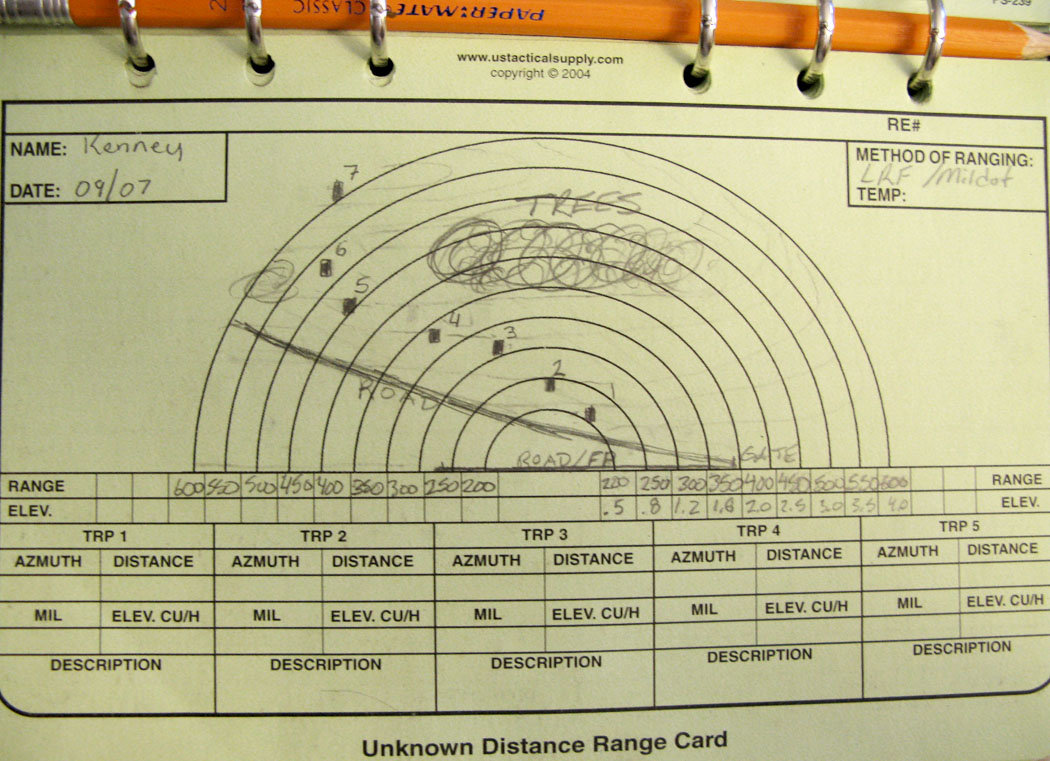
Like the field sketch a range card can also be useful to competition shooters or hunters. Pre-designated points can be plotted for easy referencing during a stage or if game pops up near that location.
[/full_width]

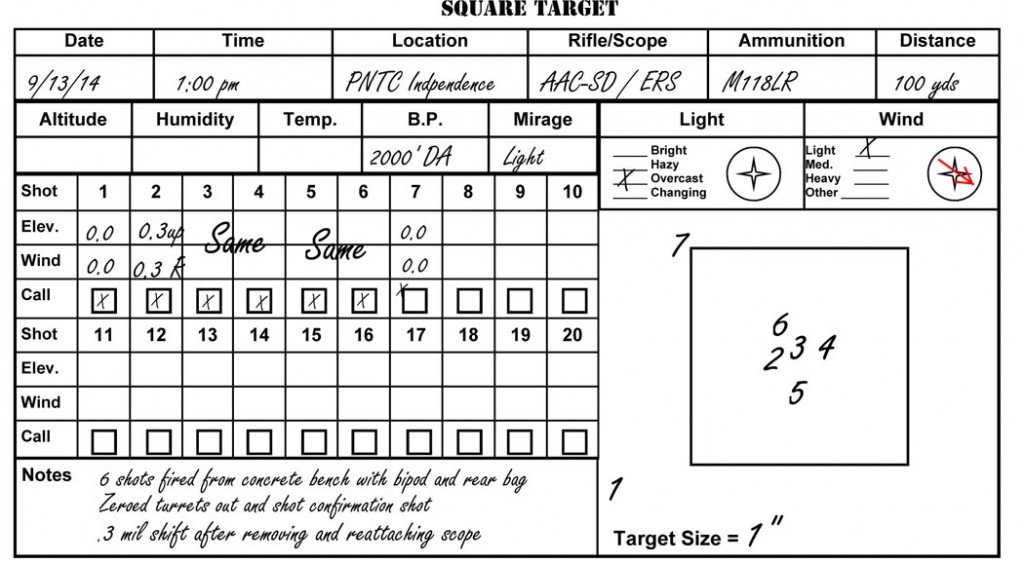
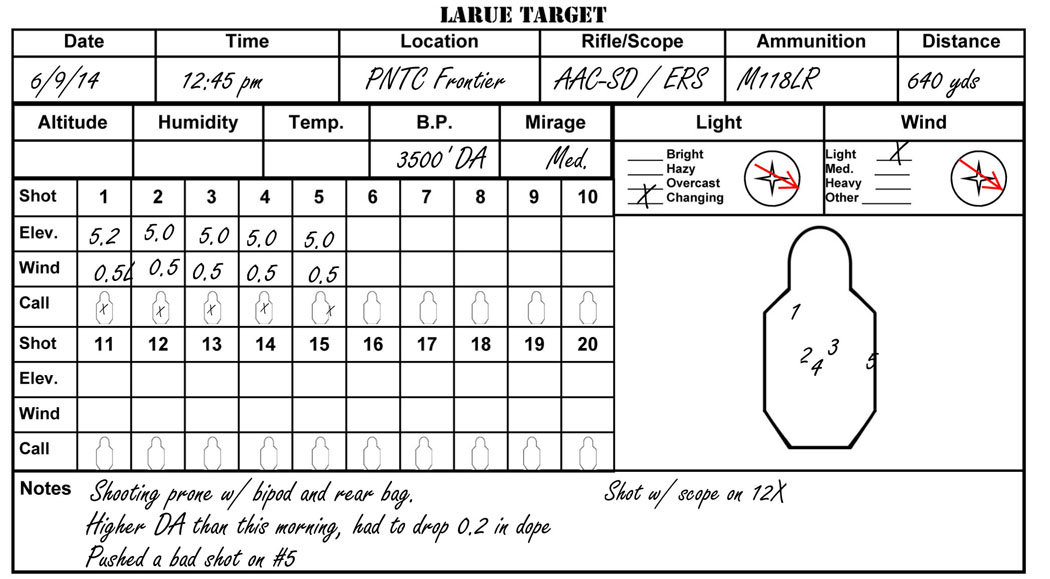
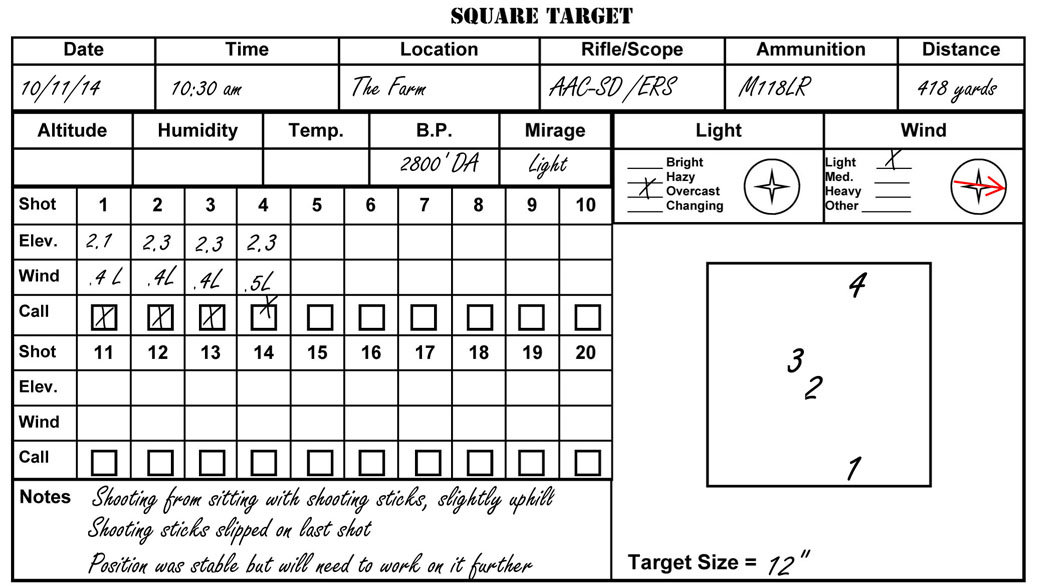
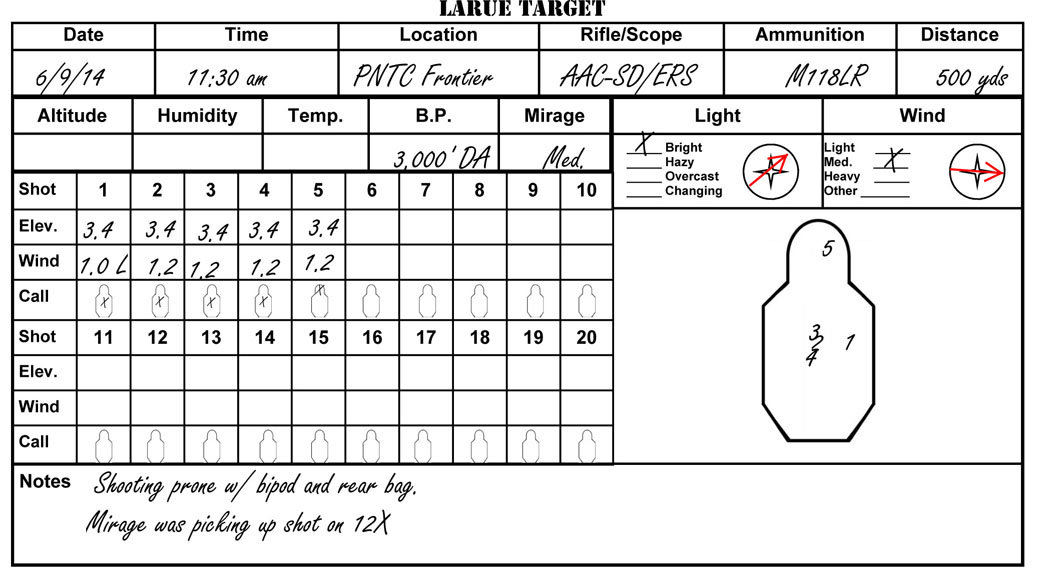
Where can I purchased a kit for a shooter’s log book
wold like one
Where can I get a physical kit like this, not a dowload.
Please let us know the details and where we can purchase these.
I have several rifles and would like to have dope sheets for all. What is the best website to get these from. .. Thanks
You can get a great set free for download from ballisticxlr.com. Support is free too. Requires genuine Microsoft Excel. You can look up meccastreisand on YouTube for instructional videos on using the charts. Enjoy!
Ian Kenney ALWAYS does a great job! Glad to see another article by him.
Thanks for a good article. Where can I purchase the Square Target cards?
Ian, Outstanding article. I am a retired 72 year old NCO that currently shoots two to three times a week. Sadly, I only have access to a 100 yard range. I do track my loads since I reload but it is only what size groups and powder load / bullet type. Sure wish I was up around Peacemaker so I could interact with guys like you. (My son lives in Martinsburg and is joining Peacemaker.) Using my AR-31, Colt 2012 I am doing 3 shot groups of .75″ and smaller. Managing .5″ or better groups with LRPVs in 6BR and .223. I’d really like to learn how to improve on these and keep good usable data. Fred
Ian, you hit it right on the head. DA is the way to go for tracking data when it comes to long range precision rifle. I just took a class from an experienced military sniper (14 years) and he introduced me to this method. Everything verified out into subsonic ranges and was spot on. It is alot simpler than having a cold temp card, normal temp card, a hot temp card and then variations for altitude. As long as you know your temp and altitude, you can get your DA, find your dope and successfully engage your target.
Ian Kenny did a super job introducing these tools. “Beware the man with one gun, he knows how to use it”. Proficency built from repetition on a single platform. If you enjoy the versatility of using several different rifles, Data Books will allow you to “pick up where you left off” and refresh “YOU” to the rifle. These tools are not only for long range work. A Data Book can be as simple as a few pages for dear/elk rifle with load data and true “fired” zero click counted and reset tested, and hold over/under data. A bit more data would be kept on a varmint rifle though I would not log each field shot, only dope changes and results. If you put good glass on a AR that can deliver accurate results, then a Data Book would also be appropriate. Some of my rifles are set for maximum point blank range, some at 100 yards and others at 200 yards. The more infrequent you use a rifle the more important data specific to that rifle is. Good data would allow that safe queen to come out and do its job without delay. Everything can get lost or ruined in the field. Put your key data on the rifle/tube. Last note: Wether your in the profession of arms or a civilian, keep your logs professional. You never know what could end up in court. Do you need a sketch and range info on your ex’s new ranch? Probably not.